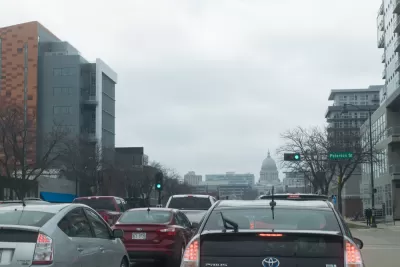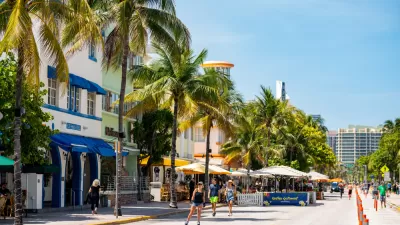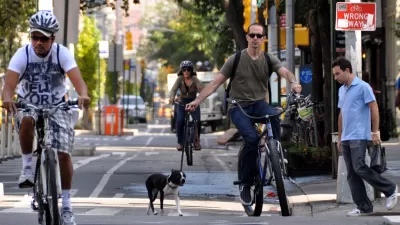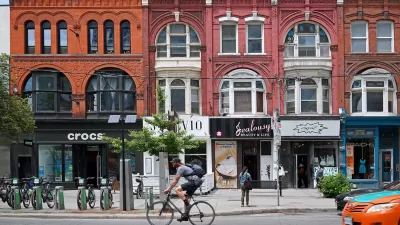An article details the efforts of Madison-area researchers to glean lessons from the transportation patterns of March and April to inform better planning for the future.

The reduced and altered transportation patterns of the pandemic presented a 'real-life experiment' in transportation engineering and planning, according to an article by Chris Hubbuch. The decreased numbers of cars and increased numbers of pedestrians and people on bikes offered researchers, "a way to study changes in traffic patterns that are typically hypothetical, allowing them to better understand traffic flows, pinpoint potential trouble spots and rethink the future of urban transportation."
The coverage relies on the expert insights of researchers from UW-Madison’s Traffic Operations and Safety (TOPS) Laboratory, which has approached the transportation effects of the pandemic as a "long-term window to study a system-wide reduction and compare highway performance to computer models." According to Jon Riehl, a traffic engineer and researcher at the lab cited in the article, the experiment could ultimately lead to "improvement in highway design and traffic engineering."
The article specifically notes that a reduction in automobile traffic was the only change on streets during the pandemic. "At the same time as it slashed automobile traffic, the pandemic response led to a surge in bicycle and foot traffic on suddenly crowded paths and sidewalks, creating a chance for planners to try out new configurations," according to Hubbuch.
According to Yang Tao, a traffic engineer for the city of Madison also paraphrased in the article, "one of the biggest lessons of the pandemic is that transportation systems should be designed with more than just one scenario in mind, a system that can easily shift to accommodate walking and biking, loading zones, outdoor seating or surges in traffic when other roads are closed by flooding, as they were in 2018."
FULL STORY: The pandemic response slashed traffic; what did it teach us about transportation planning?

Planetizen Federal Action Tracker
A weekly monitor of how Trump’s orders and actions are impacting planners and planning in America.

San Francisco's School District Spent $105M To Build Affordable Housing for Teachers — And That's Just the Beginning
SFUSD joins a growing list of school districts using their land holdings to address housing affordability challenges faced by their own employees.

The Tiny, Adorable $7,000 Car Turning Japan Onto EVs
The single seat Mibot charges from a regular plug as quickly as an iPad, and is about half the price of an average EV.

Seattle's Plan for Adopting Driverless Cars
Equity, safety, accessibility and affordability are front of mind as the city prepares for robotaxis and other autonomous vehicles.

As Trump Phases Out FEMA, Is It Time to Flee the Floodplains?
With less federal funding available for disaster relief efforts, the need to relocate at-risk communities is more urgent than ever.

With Protected Lanes, 460% More People Commute by Bike
For those needing more ammo, more data proving what we already knew is here.
Urban Design for Planners 1: Software Tools
This six-course series explores essential urban design concepts using open source software and equips planners with the tools they need to participate fully in the urban design process.
Planning for Universal Design
Learn the tools for implementing Universal Design in planning regulations.
Smith Gee Studio
City of Charlotte
City of Camden Redevelopment Agency
City of Astoria
Transportation Research & Education Center (TREC) at Portland State University
US High Speed Rail Association
City of Camden Redevelopment Agency
Municipality of Princeton (NJ)





























